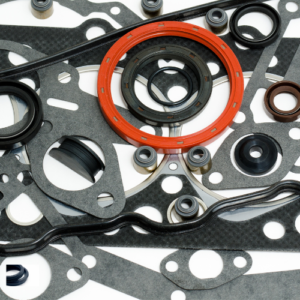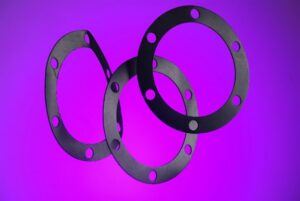
What Are Gaskets? A Critical Component in Aviation Safety and Performance
When it comes to aerospace engineering, every component, no matter how small, plays a crucial role in the overall safety and performance of an aircraft or spacecraft. One such component, often overlooked yet indispensable, is the gasket. But what exactly are gaskets, and why are they so vital in the aerospace industry?
Understanding Gaskets: The Basics
At its core, a gasket is a mechanical seal that fills the space between two or more mating surfaces. Its primary function is to prevent leakage of gases or fluids while under compression. Gaskets can be found in a wide range of applications, from your car’s engine to industrial machinery. However, when we talk about gaskets in aerospace, the stakes are much higher.
The Role of Gaskets in Aerospace
In the aerospace industry, gaskets are more than just simple seals—they are critical to the integrity and reliability of an aircraft’s systems. Here’s why:
- Sealing Under Extreme Conditions:
- Gaskets must withstand extreme temperatures, pressures, and exposure to aggressive chemicals. Whether it’s sealing the combustion chambers of a jet engine or maintaining cabin pressurization at 35,000 feet, these gaskets ensure that the system functions flawlessly under the most demanding conditions.
- Ensuring Safety:
- The failure of a gasket in an aerospace application can lead to catastrophic consequences. For example, a leak in the hydraulic system controlling the landing gear could result in a failure to deploy, leading to a dangerous landing scenario. Therefore, aerospace gaskets are designed with precision and made from high-performance materials that guarantee durability and reliability.
- Supporting Structural Integrity:
- Beyond sealing fluids and gases, gaskets also play a role in absorbing vibrations and protecting structural components. In a high-vibration environment like an aircraft, gaskets help to minimize the wear and tear on critical joints and connections, contributing to the longevity of the aircraft.
 Types of Gaskets in Aerospace
Types of Gaskets in Aerospace
Not all gaskets are created equal, especially in aerospace applications. Here are a few types commonly used in the industry:
- Metallic Gaskets: Used in high-pressure and high-temperature environments, such as in jet engines or rocket nozzles. They are made from materials like stainless steel or Inconel, providing robust sealing capabilities.
- Composite Gaskets: Often used in fuel systems and hydraulic lines, these gaskets combine metal and non-metal materials to offer flexibility and durability.
- Elastomeric Gaskets: Found in cabin pressurization systems and door seals, elastomeric gaskets are made from flexible materials like silicone or fluorocarbon, providing excellent sealing under varying pressure conditions.
Aerospace Gasket Materials: Built to Last
The materials used in aerospace gaskets are selected for their ability to withstand the unique challenges of the aerospace environment. Common materials include:
- Fluorocarbon: Known for its resistance to high temperatures and chemicals, making it ideal for fuel system gaskets.
- Graphite: Often used in high-temperature applications, such as engine components, due to its excellent thermal conductivity and stability.
- Metal Alloys: Metals like Inconel or stainless steel are used in environments where both high strength and corrosion resistance are required.
Why Quality Matters
In the aerospace industry, quality is non-negotiable. Every gasket must meet stringent standards and undergo rigorous testing to ensure it performs as expected in the field. This commitment to quality is what keeps aircraft flying safely and reliably, whether they are transporting passengers or venturing into space.
Conclusion
Gaskets may be small components, but their importance cannot be overstated. They are the unsung heroes that ensure the safe and efficient operation of aircraft and spacecraft, protecting both the people on board and the equipment itself. As the aerospace industry continues to push the boundaries of what is possible, the role of these critical components will only become more significant.
If you’re in the aerospace industry, understanding the function and importance of gaskets is key to maintaining the safety and performance of your systems. The next time you board a flight or watch a rocket launch, remember that behind the scenes, gaskets in aerospace are doing their job to keep everything running smoothly.

